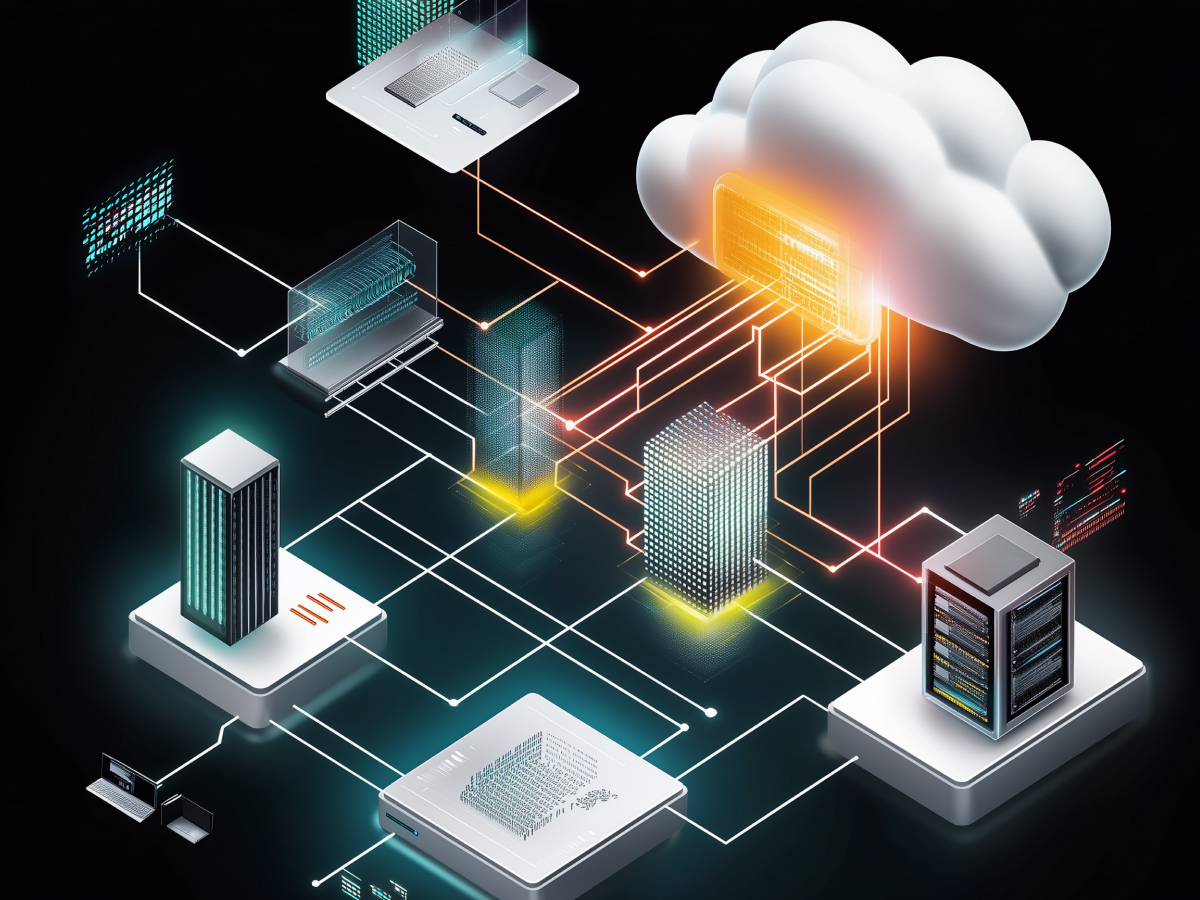1. Cloud-native security skills
By 2025, 95% of digital workloads will run on cloud-native platforms, according to Gartner. That’s not a prediction, but rather a reality waiting to happen. For those of us leading organizations, this shift makes cloud-native security non-negotiable. It’s not about protecting a centralized data center anymore. Instead, we’re looking at systems built for speed, flexibility, and global scale. Think of an Electronic Health Record (EHR) system: patient data isn’t locked in a single server room. It moves seamlessly across the cloud. That’s great for efficiency but also an open invitation to bad actors if security doesn’t keep up.
The good news? Cloud-native security can handle the complexity. It’s designed for environments where data flows freely, systems evolve constantly, and traditional perimeters simply don’t exist. For executives, this is as much a business imperative as it is an IT challenge. Investing in the right security skills now means fewer headaches later, whether you’re migrating legacy systems, building new cloud-native apps, or scaling operations.
2. Zero Trust Architecture: Trust no one, verify everything
In the cloud, trust is a liability. That’s the core idea behind Zero Trust Architecture (ZTA). It’s a straightforward concept: no user, device, or system gets a free pass. Every access request is verified—every time. In a world where workforces are distributed, and sensitive data is accessed from anywhere, this approach is, and should be, a priority.
Here’s how it works in practice. Imagine a healthcare environment where doctors access patient records on the go. ZTA makes sure every log-in is authenticated, often using Multi-Factor Authentication (MFA). Beyond that, it limits access to only what’s necessary, no extra privileges that could expose sensitive data. The network is segmented, meaning even if one section is compromised, the rest remains safe.
Implementation has its hurdles. Some systems may feel bogged down by constant verifications, but that’s where adaptive policies come in. These operate quietly in the background, stepping in only when there’s a genuine threat. For leaders, the message is clear: Zero Trust is about making security bulletproof, despite some inconvenience. With 63% of organizations already adopting ZTA, it’s quickly becoming the standard.
3. Cloud security posture management is a safety net for your cloud environment
Managing a cloud environment without Cloud Security Posture Management (CSPM) is risky. CSPM tools scan for vulnerabilities (missing permissions, weak configurations, outdated software) and flag them before they cause real damage. Think of it as a safety net for your cloud infrastructure, catching issues before they become catastrophic.
Why is this critical? Consider this: runtime scans fail 91% of the time. That’s an alarming statistic, especially for Infrastructure as a Service (IaaS) environments where resources change rapidly. CSPM provides continuous monitoring, ensuring that nothing slips through the cracks. It’s particularly valuable for C-suite leaders overseeing high-stakes operations, from customer data protection to regulatory compliance.
The key to success is starting small. Choose tools that fit your organization’s size and budget. Focus on core features, automated alerts, integration with existing systems like Identity and Access Management (IAM), and high-risk issue detection. Over time, you can expand. The result? A secure, scalable cloud environment that evolves as your business grows.
“CSPM doesn’t focus on preventing problems, but rather on staying in control. And in the cloud, control is everything.”
4. Protect the building blocks of cloud-native applications
Containers are the workhorses of modern cloud-native environments. They package everything an application needs (code, libraries, and settings) into a portable, lightweight unit. This makes development faster, deployment more efficient, and scaling a breeze. But with this flexibility comes risk. If your containers aren’t secure, your entire cloud infrastructure is vulnerable. That’s where container security comes in.
Securing containers means starting with trusted images, think of these as the blueprints for your containers. If the blueprint is flawed, everything built from it is at risk. Regular vulnerability scans catch potential issues before they’re exploited. Access control is equally important: only authorized individuals should modify or deploy these containers. A single misstep, like using an outdated MySQL image, can open the door to attackers.
For executives, container security is about mitigating risks without stifling innovation. Regular updates and security patches keep things tight. Continuous monitoring ensures you’re alerted to suspicious activity as soon as it happens. Ultimately, securing your containers secures your business.
5. Security Information and Event Management (SIEM)
SIEM is your organization’s centralized system that monitors security events across cloud and on-premises environments in real time. Unlike tools that only address misconfigurations, SIEM actively identifies and analyzes suspicious behavior, giving your team the chance to respond before small issues escalate into a full-blown crisis. For industries like healthcare, where data breaches can have life-or-death consequences, this is a game-changer.
Setting up SIEM can feel daunting. You’re connecting multiple systems (cloud services, databases, and internal applications) into one unified platform. But the benefits are enormous. Start by linking your core business systems, like Electronic Health Records (EHR) or financial applications, where data breaches would have the most significant impact. From there, fine-tune alerts to focus on the most critical threats, like repeated failed logins or unauthorized privilege changes.
For C-suite leaders, SIEM offers more than just security; it provides actionable insights. It lets you detect patterns, understand potential vulnerabilities, and prioritize your organization’s defenses. Yes, it requires investment and skilled management, but the payoff is real-time visibility into your entire security ecosystem. That’s a level of control every executive should demand.
6. Identity and Access Management (IAM)
In any cloud environment, who has access to what is a pivotal question. Identity and Access Management (IAM) ensures that only the right people access the right resources at the right time. It’s a simple concept with enormous implications. Through assigning permissions based on the least privilege principle, IAM minimizes risks while maintaining operational efficiency.
Here’s a surprising fact: only 2% of granted permissions are actually used. This statistic points to the importance of reviewing and refining access controls regularly. Left unchecked, users can accumulate excessive permissions over time, increasing the risk of accidental or malicious data breaches. IAM simplifies this by defining roles (whether IT admin, finance, or manager) and assigning permissions accordingly.
For added security, Multi-Factor Authentication (MFA) is non-negotiable. It requires users to verify their identity using more than just a password, such as a one-time code sent to their device. IAM systems also log every access attempt, providing a clear trail for audits and threat analysis.
“When done right, IAM reduces risks while keeping your team productive. It’s a win-win in today’s cloud-first world.”
Key Takeaways for decision-makers
- Zero Trust Architecture (ZTA): Adopt ZTA to make sure every access request is verified, reducing risk in distributed cloud environments. Focus on high-risk areas, use Multi-Factor Authentication (MFA), and implement least privilege access to safeguard sensitive data.
- Identity and Access Management (IAM): Limit user permissions to the minimum necessary and regularly audit access rights. This reduces exposure to potential breaches while maintaining operational efficiency.
- Cloud Security Posture Management (CSPM): Implement CSPM tools to continuously monitor cloud configurations for vulnerabilities. Prioritize tools with automated alerts and focus on high-risk misconfigurations for efficient risk mitigation.
- Real-Time Threat Detection with SIEM: Use SIEM systems to monitor security events in real time, identifying and addressing threats before they escalate. Start with core applications and fine-tune alerts to avoid unnecessary noise.





